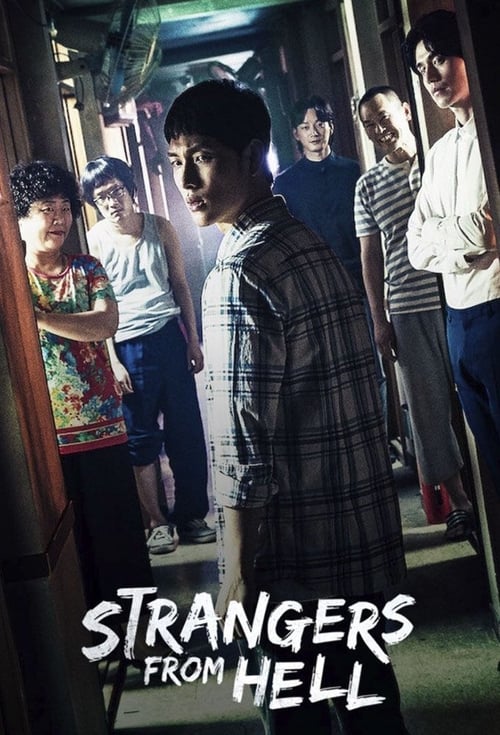
Ask Your Own Question
What is the plot?
The episode begins with a flashback to 2000, where a young girl named Lee Jin-sook is seen playing in a park. She is approached by a man who offers her candy, and despite her initial hesitation, she is lured away. The scene shifts to the present day, where Detective Park Hae-young is in a tense meeting with his superiors regarding a series of unsolved murders. He is frustrated by the lack of progress and feels the pressure to solve the case.
Meanwhile, Detective Cha Soo-hyun is investigating the same series of murders. She is haunted by her past failures and is determined to prevent any further killings. The two detectives are unaware that they are connected through a mysterious walkie-talkie that allows them to communicate across time. Hae-young receives a call from the past, and he realizes he can warn Soo-hyun about the impending murder of Jin-sook.
Hae-young quickly relays the information to Soo-hyun, who is initially skeptical but decides to take action. She rushes to the location where Jin-sook is supposed to be, but time is running out. As she arrives, she spots the man from the flashback, who is now an adult, attempting to abduct Jin-sook. Soo-hyun intervenes just in time, confronting the man and trying to protect the girl.
A struggle ensues between Soo-hyun and the abductor. She fights fiercely, using her training as a detective to subdue him. However, the man is strong and manages to push her away, causing her to stumble. Just as he is about to grab Jin-sook, Hae-young, from the future, provides crucial information over the walkie-talkie, guiding Soo-hyun on how to outmaneuver him. Following his instructions, she regains her footing and successfully restrains the man until backup arrives.
After the confrontation, Jin-sook is safe, and Soo-hyun feels a sense of relief mixed with disbelief at the strange circumstances that allowed her to save the girl. Hae-young, on the other hand, is filled with a mix of hope and anxiety, knowing that they have changed the past but unsure of the consequences it may bring.
As the episode progresses, the detectives begin to piece together the identity of the abductor, who is revealed to be a serial killer with a long history of evading capture. They delve into his background, uncovering clues that lead them to believe he may have more victims. Hae-young and Soo-hyun work together, sharing information across time, which helps them to build a stronger case against him.
In a pivotal moment, they discover that the killer has a specific pattern and that he is likely to strike again. They set a trap, using Jin-sook as bait to lure him out. The tension builds as they prepare for the confrontation, knowing that they must act quickly to prevent another tragedy.
The climax of the episode occurs during the sting operation. The detectives are on high alert, and as the killer approaches, they spring into action. A chaotic chase ensues, with Soo-hyun and Hae-young coordinating their efforts through the walkie-talkie. They manage to corner the killer, but he fights back fiercely, leading to a tense standoff.
In the final moments, Soo-hyun confronts the killer directly, drawing on her determination and the knowledge she has gained from Hae-young. With a combination of bravery and skill, she is able to apprehend him, ensuring that he will not harm anyone else. The episode concludes with a sense of accomplishment, but also a lingering uncertainty about the future and the impact of their actions on the timeline.
What is the ending?
In the ending of "We Can Prevent the Killings," the team successfully prevents a murder that was originally destined to happen. However, the emotional toll of their actions weighs heavily on them, particularly on Detective Park Hae-young, who grapples with the consequences of altering the past. The episode concludes with a sense of unresolved tension as the characters reflect on their choices and the implications of their ability to communicate across time.
As the episode nears its conclusion, the tension escalates in the dimly lit police station where Detective Park Hae-young, along with his colleagues, is racing against time to prevent a murder that they have learned about through the mysterious walkie-talkie connection with the past. The clock ticks ominously, heightening the urgency of their mission. Hae-young, driven by a mix of determination and desperation, leads the charge, fueled by the haunting knowledge of the victim's fate.
In a pivotal scene, Hae-young and his partner, Detective Ji An, gather crucial evidence that points them toward the suspect. The atmosphere is thick with anxiety as they piece together the clues, their faces etched with concern. Hae-young's internal struggle is palpable; he is torn between the fear of failing to save an innocent life and the weight of the responsibility that comes with altering the course of events.
As they close in on the suspect, the scene shifts to a tense confrontation. Hae-young and Ji An arrive at the location where the murder is set to occur. The air is charged with anticipation as they confront the suspect, who is caught off guard. The struggle that ensues is fraught with danger, and the stakes are higher than ever. Hae-young's resolve is tested as he fights not only to save the victim but also to confront his own fears of inadequacy and failure.
In a climactic moment, they manage to intervene just in time, preventing the murder from taking place. The relief washes over them, but it is quickly overshadowed by the realization that their actions have consequences. Hae-young stands in the aftermath, grappling with the emotional weight of what they have done. The victory feels bittersweet, as he reflects on the fragility of life and the moral complexities of their intervention.
As the episode draws to a close, the characters are left to ponder the implications of their actions. Hae-young, Ji An, and their team share a moment of quiet reflection, their expressions a mix of relief and uncertainty. They have succeeded in saving a life, but the emotional scars of their choices linger. Hae-young's internal conflict is evident as he contemplates the nature of fate and the burden of wielding such power.
The episode ends on a poignant note, leaving viewers with a sense of unresolved tension. The characters are forever changed by their experiences, and the weight of their actions looms large as they navigate the complexities of their intertwined fates. The final scene captures Hae-young's contemplative gaze, hinting at the ongoing struggle between hope and despair as they continue to grapple with the consequences of their ability to alter the past.
Is there a post-credit scene?
In "We Can Prevent the Killings," the third episode of Signal, there is no post-credit scene. The episode concludes without any additional scenes or content after the credits roll. The focus remains on the intense narrative and character development throughout the episode, leaving viewers with the emotional weight of the story rather than a teaser or additional content. The episode wraps up with the main plot points and character arcs, emphasizing the ongoing struggle to prevent future crimes and the connections between the past and present.
What significant event does the team try to prevent in this episode?
In this episode, the team focuses on preventing a series of murders that are linked to a cold case involving a serial killer. They work to identify the killer's pattern and stop the next murder from occurring.
How does the communication between the two timelines affect the investigation?
The communication between the two timelines allows the characters to share crucial information that helps them piece together clues about the killer's identity and the timeline of the murders, creating a sense of urgency and tension as they race against time.
What role does Detective Park Hae-young play in the investigation?
Detective Park Hae-young is a key figure in the investigation, using his knowledge of the past and present to connect the dots. His emotional investment in the case drives him to work tirelessly to prevent the murders, showcasing his determination and sense of justice.
How does the character of Lee Jae-han influence the investigation?
Lee Jae-han, who communicates from the past, provides critical insights and warnings that help the team navigate the complexities of the case. His perspective as a detective from a different time adds depth to the investigation and highlights the challenges of working across timelines.
What emotional struggles does the character of Cha Soo-hyun face in this episode?
Cha Soo-hyun grapples with the weight of the investigation and the pressure to solve the case before more lives are lost. Her internal conflict is heightened by her desire to protect victims and her fear of failure, which adds a layer of emotional depth to her character.
Is this family friendly?
In "We Can Prevent the Killings," the third episode of Signal, there are several elements that may be considered objectionable or upsetting for children or sensitive viewers.
-
Violence and Crime: The episode revolves around a series of murders, which are depicted in a way that may be disturbing. There are scenes that involve crime scenes and discussions of violent acts.
-
Emotional Trauma: Characters experience significant emotional distress related to the murders, including grief and fear. This may be intense for younger viewers.
-
Police Investigation: The portrayal of police work includes tense moments and confrontations that may be unsettling, particularly for those sensitive to themes of law enforcement and crime.
-
Dark Themes: The overarching themes of the episode deal with loss, the impact of crime on families, and the struggle to prevent further violence, which may be heavy for younger audiences.
These elements contribute to a tone that may not be suitable for all viewers, particularly children.































